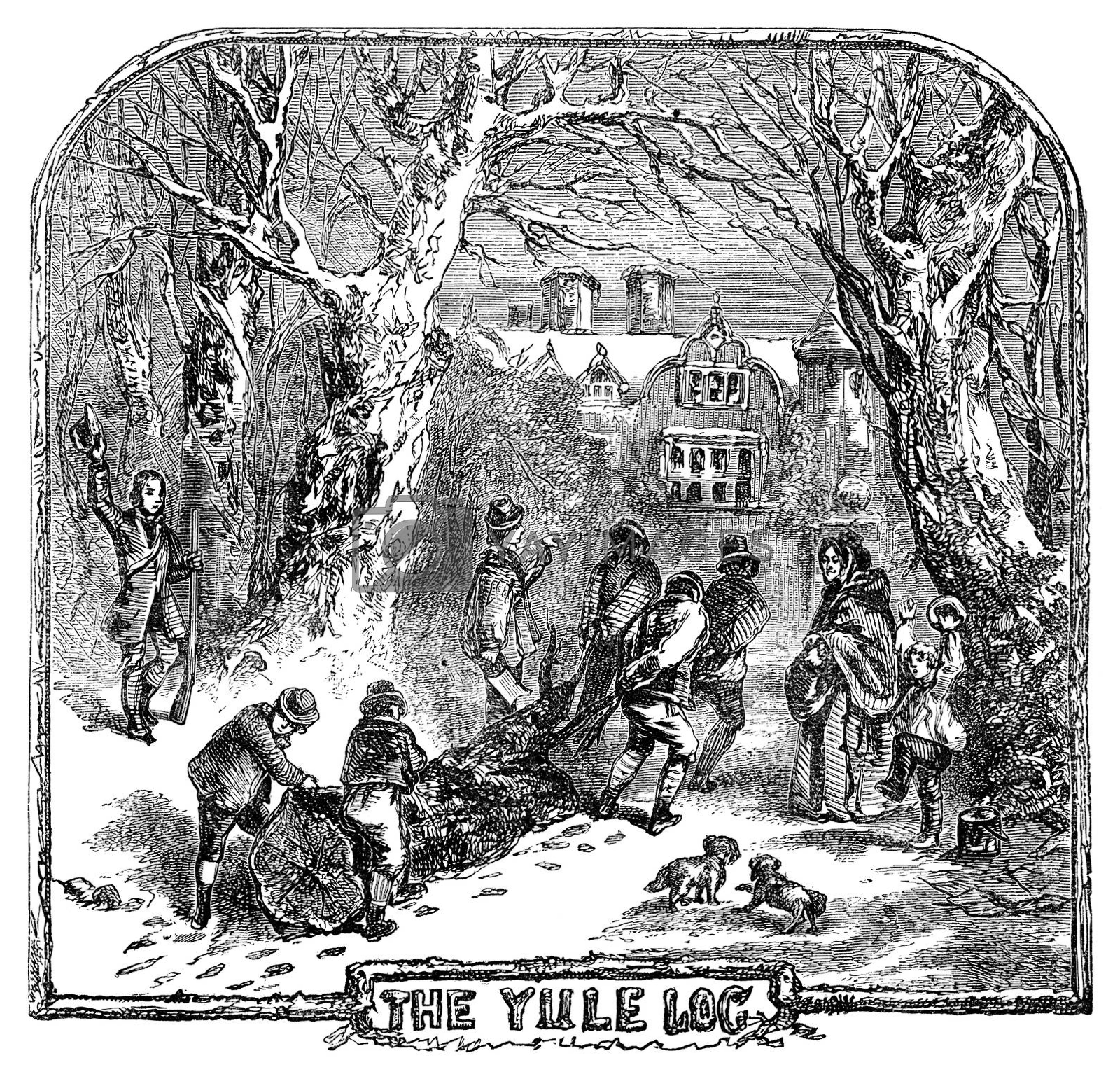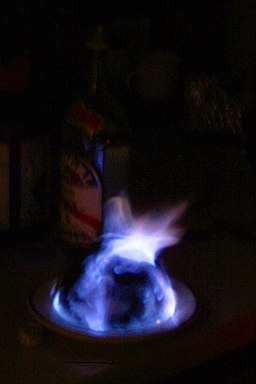by Maria Grace
Twinkling lights are an iconic emblem of the holiday season. Even before the Christmas tree was widely in vogue, the Regency Christmastide season had its own array of holiday lights.Yule Log
The Yule log is perhaps the best known of the traditional holiday lights.
 The Yule Log, an enormous log of freshly cut wood, would be gathered by teams of farmhands, and hauled to the house with great ceremony and merriment. Once on the hearth, the log might be anointed with oil, salt and wine, with suitable prayers made.
The Yule Log, an enormous log of freshly cut wood, would be gathered by teams of farmhands, and hauled to the house with great ceremony and merriment. Once on the hearth, the log might be anointed with oil, salt and wine, with suitable prayers made.The log was lit on Christmas Eve, with splinters saved from the log from the previous year. The fire was to last until the end of Christmas Day at least and was kept smoldering until Twelfth Night. The Yule Log was believed to bring prosperity and protection from evil. Families kept a remnant of the log all the year long so protection would remain across the seasons. Even the ashes were believed to hold power. They would be scattered over fields to promote fertility
Christmas or Yule Candle
At the end of the 18th century, it became the custom for chandlers and other merchants to present regular customers with the gift of a large candle at Christmas. This large candle would be lit at sunset on Christmas Eve and burn until Christmas service (or dawn) the next day.
Traditional superstitions said that dire consequences, ill fortune or even the death of a family member, would ensue if the candle should burn out too soon. Typically the Yule Candle would be place at the dining table and lit a sunset by the head of the household who would also be the one to extinguish it, should that be necessary. Once lit, it was not to be moved nor any other candle lit from its flame.
Christmas Eve supper was served in the light of the Yule Candle. To prevent bad luck, an even number of people had to sit down to the meal and all leave at the same time after the meal ended. Servants might be pressed to join the family at the table to ensure the desirable even number of diners.
The light of the Yule Candle was thought to convey special blessings to anyone touched by it. Holiday breads were stacked around it, so they would be kept fresh by its light. Precious possessions might also be placed within its glow so that they might be protected from harm.
The stub of the Yule Candle and any drippings were also though to offer protection and healing. The wax might be used on cuts and sores or to mark the backs of farm animals to ensure their health and productivity in the coming year.
Plum Pudding
 |
| A flaming Christmas Pudding |
The Sunday before advent was known as Stir Up Sunday, the day for plum puddings to be made. The day became known as “Stir Up Sunday,” not because of the great deal of stirring done, but because of This is because the opening words of the main prayer in the Book of Common Prayer of 1549 for that day are: ‘Stir up, we beseech thee, O Lord, the wills of thy faithful people...’
Christmas pudding is prepared with 13 ingredients to represent Christ and the 12 apostles then it is "stirred up". All family members must take a hand in the stirring, using a special wooden spoon (in honor of Christ's crib and stable). The stirring must be done clockwise, from east to west to honor the journey of the Magi, with eyes shut, while making a secret wish.
After the family stirred the pudding, tiny charms might be added to the pudding to reveal their finders’ fortune. The trinkets often included a thimble (for spinsterhood or thrift), a ring (for marriage), a coin (for wealth), a miniature horseshoe or a tiny wishbone for good luck, and an anchor for safe harbor. The pudding was then steamed in a cloth bag and hung up to age until Christmas Day.
When the pudding was served, a sprig of holly was placed on the top of the pudding as a reminder of Jesus' Crown of Thorns. It was then doused with brandy and lit. A portion of the pudding was saved for New Years to assure good luck.
Snapdragon
 |
| Dragon playing snapdragon |
While brandy burns with a relatively cool flame, I’m not sure I would suggest this for the next family Christmas party. Though not nearly so dramatic, charades is probably much safer!
References
Ayto, John. An A-Z of Food & Drink. Oxford University Press:Oxford. 2002
Broomfield, Andrea. Food and Cooking in Victorian England: A History. Praeger:Westport CT. 2007
Davidson,Alan . Oxford Companion to Food, Oxford University Press:Oxford. 2000
Glasse, Hannah .The Art of Cookery made plain and easy, 1784.
Godey's Lady's Book, Dec. 1860
Griffen ,Robert H. and Ann H. Shurgin editors. The Folklore of World Holidays,Second Edition. Gale:Detroit.1998
Knightly, Charles. The Customs and Ceremonies of Britain. London:Thames and Hudson. 1986
Revel ,Rachel. Winter Evening Pastimes or The Merry Maker’s Companion. 1825
Yule Log
Yule Log
Yule Log
The Yule Candle in the Regency
[This is an Editors' choice archive post, originally published on 14th December, 2013]
~~~~~~~~~~~~
Maria Grace is the author of Darcy's Decision, The Future Mrs. Darcy and All the Appearance of Goodness. The Trouble to Check Her was released in February 2016 Click here to find her books on Amazon. For more on her writing and other Random Bits of Fascination, visit her website. You can also like her on Facebook, follow on Twitter or email her.
Most recently, Pemberley: Mr. Darcy's Dragon was released in October 2016


This comment has been removed by the author.
ReplyDeleteThank you for the post. I'd heard of a Yule Log before, but never knew its meaning or origin. And now I do :)
ReplyDeleteStir up Sunday isn't the last Sunday in November. It's the last Sunday before Advent (also the last Sunday of the church year), which was 20th November this year. It gets its name from the opening words of the collect for the day - Stir up, we beseech thee, O Lord, the wills of thy faithful people; that they, plenteously bringing forth the fruit of good works, may of thee be plenteously rewarded; through Jesus Christ our Lord. Amen
ReplyDelete